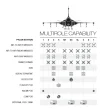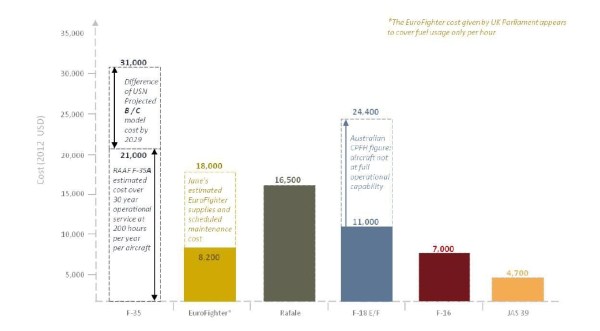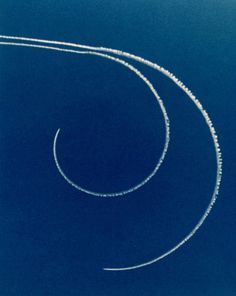Mistäs ihmeestä tuo Gripenin RCS arvo on repäisty? Ei nimittäin oikein ole tosielämän havaintojen kanssa linjassa...
http://www.f-16.net/forum/viewtopic.php?f=55&t=11311&start=676
Puolalaiset Block 52 Viperit perinteisellä AN/APG-68(V)9 tutkalla päihitti ruotsalaisten Gripenit BVR-taisteluharjoituksessa koska näkivät omalla tutkallaan Gripenit aikaisemmin kuin mitä Gripenit näkivät puolalaiset Viperit omalla tutkallaan.
Kumpikaan noista ei oikein tue väitettä että Gripenin RCS olisi merkittävästi pienempi kuin vaikkapa F-16:sta vastaava.
Hmm. Oliko jokin toinen lähde tuolle tiedolle, että puolalaiset päihittivät? Ainakaan tuossa sitä ei mainittu? Lisäksi ristiriidassa esim. allaolevan kanssa.
Mitä tulee tuohon lainaukseen, niin kyse on jostain foorumikirjoittajasta, joka on ilmeisesti jossain määrin "anti-gripen". Eli, pienellä varauksella kannattaa lukea jutut.
Mutta, varmasti iso selittävä tekijä on tuo mitä Deposse jo mainitsi. Jos koneissa on ollut lisätankit ja ohjukset, ei niiden havaintoetäisyys ole välttämättä merkittävästi eronnut. Erityisesti, kun havaintoetäisyys on 10-kantainen logaritmi heijasteesta, kuten tiedät.
Lisäksi erikseen mainittiin, että kyse oli Gripen A-versiosta. Ilmeisesti jo A-->C on tapahtunut merkittävää parannusta. Ohessa poimintaa E-Afrikkalaiselta foorumilta.
http://www.saairforce.co.za/forum/v...&sid=a9f39e2f6ac820efed9a8579c88e510e&start=0
I am impressed (of Gripen RCS)
And it's yet smaller on JAS 39C. One of the very few areas that is forbidden to photograph is down the the intakes towards the fan and engine. IR signature already low on 39A is also further reduced on JAS 39C. This aircraft flew in late 2002 so a lot of new technology and materials had been developed and matured that was not ready for the late 80s Gripen design.
Since the wings are of composite material the wings need to be covered in a material that can distribute electrical current, on the JAS 39A/B this is done by a thin metallic film. For the JAS 39C/D the metallic film has been replaced by conductive paint that requires no service repair, is lighter and more beneficial to the (low) signature management.
The flame holder on the early 39A was replaced by a new radially cooled flame holder designed by Volvo Aero, this has reduced the already low IR signature (*) and also service needs. (* Fuel and air distribition is used to cool the jet (excess hot air from heat exchangers is for instance released through shoulder-ducts that sit behind the cockpit)... when fuel is above a specified temperature it's replaced by cooler fuel and pumped through various heat exchangers for cooling and out to the tanks again.. it's a bit complicated to write about tbh.)
There's so much with the Gripen that is different... and 39C is too often said to be just a nato version of 39A but it's so much more.... builds on experience with the 39A operative years and where possible they reduced service needs together with the other improvements. Even changed from light bulbs to LED lights to reduce service needs even if they cost a bit more in the beginning.
Regarding the RCS, this is probably not information that will ever make it onto a forum like this. Also, to say that the RCS is 0.1m squared is all fine and well, but from which angle?
Angle, radar decibels, at what frequency on what bands etc... you need dynamic rcs data that won't be available. That's why everyone use a average and public number for method simulations that is not state secrets.
It's just like when the yanks or anyone else claim a RCS figure, it's a average number they feel comfortable to leave to the public. Just like the one Sweden has put out on Gripen. That's why everyone in the industry who market aircraft radars lists detection range against a 5m2 or 1m2 standard fighter jet (F-16 class) with that teoretical average radar image so customers can better compare competing products.
F-16C has a public average RCS of 1.2m2, the Gripen 0.1m2. I can assure you there's many land based radar systems in the west that has problems with Gripen and we have a number of reports how Gripen pilots call amraam shots earlier than other nato aircraft of the older generations simply because their radars need to come in far closer to a Gripen to even detect it on radar. In addition the Gripen radar is as strong or stronger than most of the older European NATO jets.
That equation translates directly to a first look-first kill ability. Without even adding the superior datalink sharing to the formula.











